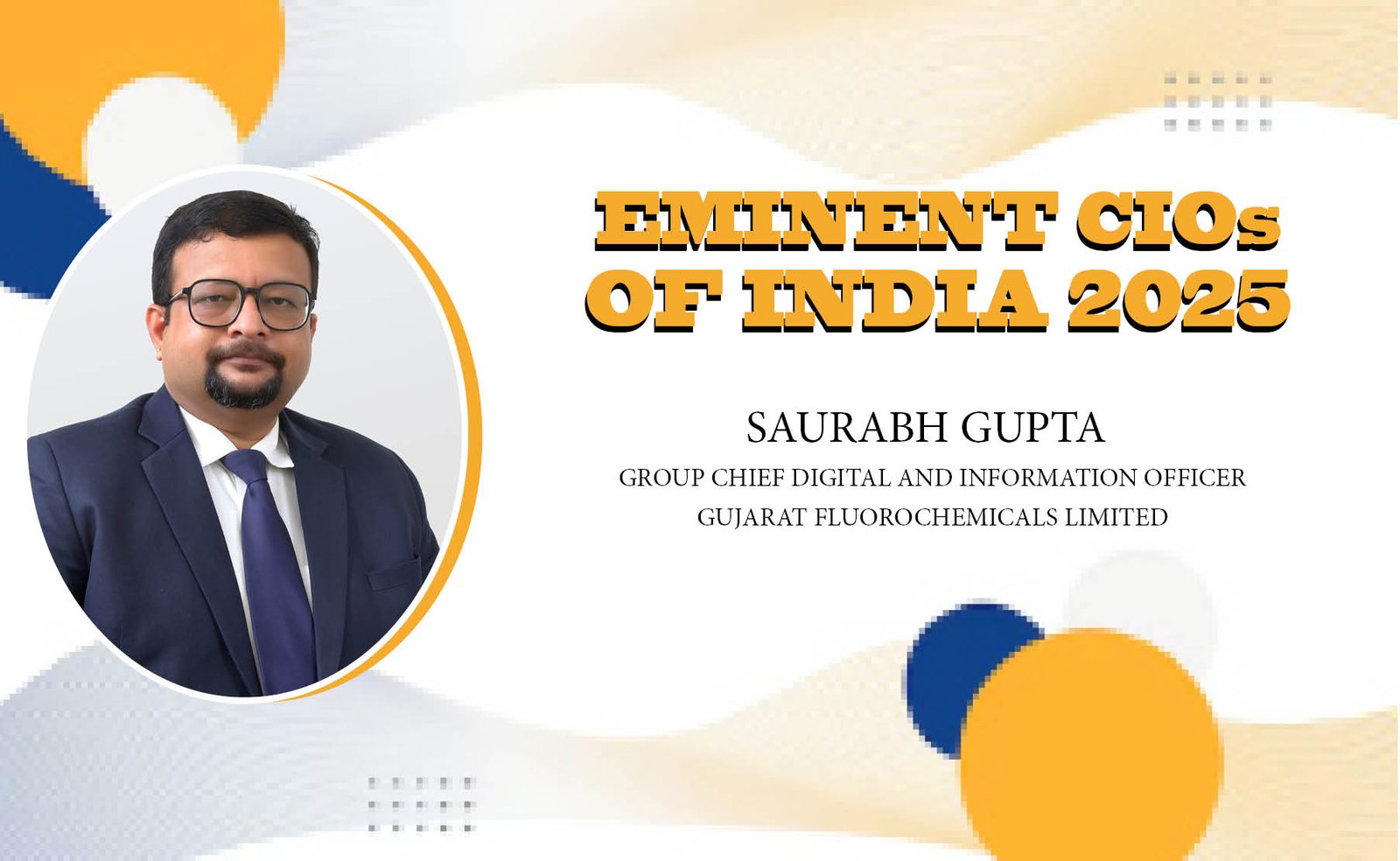Saurabh Gupta,
Group Chief Digital And Information Officer, Gujarat Fluorochemicals Limited
In 2025, enterprise technology is being revolutionized by a series of transformative trends that are redefining operations, innovation, and business value creation.
AI-Powered Automation, Cloud-Native and Edge Technologies
AI is now embedded across business functions, enhancing customer service, development, and decision-making. AI copilots are becoming standard, boosting productivity. Hyperautomation—powered by AI, RPA, and low-code platforms—is enabling full-scale process automation, accelerating workflows and cutting costs. Enterprises are adopting serverless computing, Kubernetes, and multi-cloud strategies to gain scalability and resilience. Edge computing is enabling real-time data insights closer to the source.
Security and Cyber Resilience
Cybersecurity mesh architecture and Zero Trust models are strengthening threat detection and access control. Automation and AI are driving proactive incident response, vulnerability detection, and policy enforcement across hybrid environments.
Enterprises are embedding cybersecurity awareness at every level. Key measures include executive leadership buy-in, tailored employee training, gamified learning, secure onboarding, routine simulations, and AI-driven threat detection. Encouraging openness, rewarding secure behaviors, and securing remote work environments are critical to success. AI and automation are now central to security strategies. They enable real-time threat detection, automated incident response, compliance monitoring, and proactive risk management. Zero Trust architectures enforce identity verification, access control, and segmentation. Cloud-native security tools, AI analytics, biometric authentication, and secure DevSecOps pipelines round out the enterprise defense strategy.
Nex-Gen Tech and Employee-Centric Platforms
Unified data architectures (data fabrics) are improving data governance, access, and analytics. Digital twins allow virtual modeling and simulation, enhancing decision-making and operational efficiency. Cloud platforms tailored to specific industries are gaining traction, blending SaaS, PaaS, and IaaS for vertical-specific use cases. Meanwhile, quantum computing is starting to impact sectors like logistics and materials science. Sustainability is a priority, with enterprises investing in energy-efficient data centers and green cloud solutions. Employee Experience Platforms (EXP) are integrating well-being, collaboration, and learning to engage hybrid workforces.
The CIO’s Expanding Role
CIOs are evolving from IT managers to strategic digital enablers. They’re aligning technology with business goals, driving customer-centric innovations, leading data strategy, and ensuring cybersecurity. They also influence talent strategy, promote sustainability, and contribute directly to financial ROI and agility.






